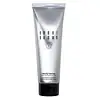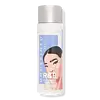What's inside
What's inside
 Key Ingredients
Key Ingredients

No key ingredients
 Benefits
Benefits

 Concerns
Concerns

 Ingredients Side-by-side
Ingredients Side-by-side

Water
Skin ConditioningPotassium Myristate
EmulsifyingGlycerin
HumectantPotassium Behenate
CleansingSodium Methyl Cocoyl Taurate
CleansingPotassium Palmitate
EmulsifyingPotassium Laurate
EmulsifyingPotassium Stearate
CleansingPersea Gratissima Oil
Skin ConditioningTriticum Vulgare Germ Oil
EmollientSimmondsia Chinensis Seed Oil
EmollientVitis Vinifera Seed Oil
EmollientSesamum Indicum Seed Oil
EmollientRosa Canina Fruit Oil
EmollientLimnanthes Alba Seed Oil
Skin ConditioningOlea Europaea Fruit Oil
MaskingPrunus Amygdalus Dulcis Oil
Skin ConditioningOenothera Biennis Oil
EmollientPrunus Armeniaca Kernel Oil
MaskingBrassica Campestris Seed Oil
Skin ConditioningCitrus Grandis
Lavandula Angustifolia Extract
Skin ConditioningRosmarinus Officinalis Leaf
Skin ConditioningSqualane
EmollientCetearyl Alcohol
EmollientPetrolatum
EmollientButyrospermum Parkii Butter
Skin ConditioningMethyldihydrojasmonate
MaskingPolyquaternium-7
PEG-3 Distearate
EmulsifyingDisodium EDTA
Limonene
PerfumingLinalool
PerfumingMethylchloroisothiazolinone
PreservativeMethylisothiazolinone
PreservativeWater, Potassium Myristate, Glycerin, Potassium Behenate, Sodium Methyl Cocoyl Taurate, Potassium Palmitate, Potassium Laurate, Potassium Stearate, Persea Gratissima Oil, Triticum Vulgare Germ Oil, Simmondsia Chinensis Seed Oil, Vitis Vinifera Seed Oil, Sesamum Indicum Seed Oil, Rosa Canina Fruit Oil, Limnanthes Alba Seed Oil, Olea Europaea Fruit Oil, Prunus Amygdalus Dulcis Oil, Oenothera Biennis Oil, Prunus Armeniaca Kernel Oil, Brassica Campestris Seed Oil, Citrus Grandis, Lavandula Angustifolia Extract, Rosmarinus Officinalis Leaf, Squalane, Cetearyl Alcohol, Petrolatum, Butyrospermum Parkii Butter, Methyldihydrojasmonate, Polyquaternium-7, PEG-3 Distearate, Disodium EDTA, Limonene, Linalool, Methylchloroisothiazolinone, Methylisothiazolinone
Water
Skin ConditioningAloe Barbadensis Leaf Juice
Skin ConditioningCocamidopropyl Hydroxysultaine
CleansingSodium Methyl 2-Sulfolaurate
CleansingDisodium 2-Sulfolaurate
CleansingSodium Lauroyl Methyl Isethionate
CleansingGlycerin
HumectantBetaine
HumectantSodium PCA
HumectantNiacinamide
SmoothingPanthenol
Skin ConditioningCentella Asiatica Extract
CleansingTremella Fuciformis Polysaccharide
Emulsion StabilisingGlycyrrhiza Glabra Root Extract
BleachingLentinus Edodes Extract
Skin ConditioningCamellia Sinensis Leaf Extract
AntimicrobialAllantoin
Skin ConditioningOlea Europaea Fruit Oil
MaskingPersea Gratissima Oil
Skin ConditioningSimmondsia Chinensis Seed Oil
EmollientChlorophyllin-Copper Complex
AntioxidantLactobacillus Ferment
Skin ConditioningSodium Benzoate
MaskingPotassium Sorbate
PreservativeDiethyl Phthalate
MaskingWater, Aloe Barbadensis Leaf Juice, Cocamidopropyl Hydroxysultaine, Sodium Methyl 2-Sulfolaurate, Disodium 2-Sulfolaurate, Sodium Lauroyl Methyl Isethionate, Glycerin, Betaine, Sodium PCA, Niacinamide, Panthenol, Centella Asiatica Extract, Tremella Fuciformis Polysaccharide, Glycyrrhiza Glabra Root Extract, Lentinus Edodes Extract, Camellia Sinensis Leaf Extract, Allantoin, Olea Europaea Fruit Oil, Persea Gratissima Oil, Simmondsia Chinensis Seed Oil, Chlorophyllin-Copper Complex, Lactobacillus Ferment, Sodium Benzoate, Potassium Sorbate, Diethyl Phthalate
 Reviews
Reviews

Ingredients Explained
These ingredients are found in both products.
Ingredients higher up in an ingredient list are typically present in a larger amount.
Glycerin is already naturally found in your skin. It helps moisturize and protect your skin.
A study from 2016 found glycerin to be more effective as a humectant than AHAs and hyaluronic acid.
As a humectant, it helps the skin stay hydrated by pulling moisture to your skin. The low molecular weight of glycerin allows it to pull moisture into the deeper layers of your skin.
Hydrated skin improves your skin barrier; Your skin barrier helps protect against irritants and bacteria.
Glycerin has also been found to have antimicrobial and antiviral properties. Due to these properties, glycerin is often used in wound and burn treatments.
In cosmetics, glycerin is usually derived from plants such as soybean or palm. However, it can also be sourced from animals, such as tallow or animal fat.
This ingredient is organic, colorless, odorless, and non-toxic.
Glycerin is the name for this ingredient in American English. British English uses Glycerol/Glycerine.
Learn more about GlycerinOlea Europaea Fruit Oil is the fixed oil obtained from the ripe fruit of the Olive. In other words - olive oil.
The primary contents of olive oil are glycerides of the fatty acids linoleic, oleic and palmitic.
Olive oil also contains antioxidants such as Vitamin E. Antioxidants may help reduce signs of aging by fighting unstable free-radical molecules. It also contains Vitamins A (retinol), D, and K.
The squalene in olive oil makes it a great emollient. Emollients help soothe and soften your skin by trapping moisture in. This makes olive oil a great skin moisturizer.
Studies show olive oil to have antibacterial and antifungal properties in low concentrations. Another study found olive oil irritated sensitive oily skin. We always recommend speaking with a professional about using this ingredient in your routine.
Due to the fatty acid content, this ingredient may not be fungal-acne safe.
Learn more about Olea Europaea Fruit OilPersea Gratissima Oil is also known as avocado oil.
Avocado Oil has antioxidant properties. It is mostly made up of the glycerides of fatty acids. About 67% of these fatty acids is made up of oleic acid. Palmitic acid and linoleic acid are also present.
These fatty acids help hydrate and soften the skin. It may increase collagen content in the skin. Collagen helps keep your skin plump and firm. This ingredient helps reduce inflammation and has not shown to clog pores.
This ingredient may not be fungal-acne safe due to its high fatty acid content.
Avocados also have B vitamins, vitamin K, vitamin C, vitamin E, and potassium.
Learn more about Persea Gratissima OilThis oil comes from the seeds of the desert shrub called Jojoba. It is more commonly known as jojoba oil, a non-comedogenic oil.
Jojoba oil does not contain fragrance and has many fatty-acids, making it a great soothing ingredient.
It also contains Vitamin E, a great moisturizing ingredient. Vitamin E is also an antioxidant and protects your skin against oxidative damage.
This ingredient humectant properties, meaning it helps draw moisture from the air. This helps keep your skin hydrated.
While jojoba has antibacterial properties, it is only able to kill some strains of bacteria.
Studies also show it helps in wound healing. In fact, Indigenous cultures have used jojoba as a moisturizer and to help treat burns for centuries.
Fun fact: Jojoba oil similar to natural human skin sebum, so it has a great effect on dry skin. It is also promising with helping to regulate sebum production.
Due to its fatty acid content, Jojoba oil may not be fungal acne safe. We recommend speaking with a professional if you have any concerns.
Learn more about Simmondsia Chinensis Seed OilWater. It's the most common cosmetic ingredient of all. You'll usually see it at the top of ingredient lists, meaning that it makes up the largest part of the product.
So why is it so popular? Water most often acts as a solvent - this means that it helps dissolve other ingredients into the formulation.
You'll also recognize water as that liquid we all need to stay alive. If you see this, drink a glass of water. Stay hydrated!
Learn more about Water